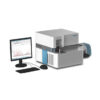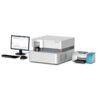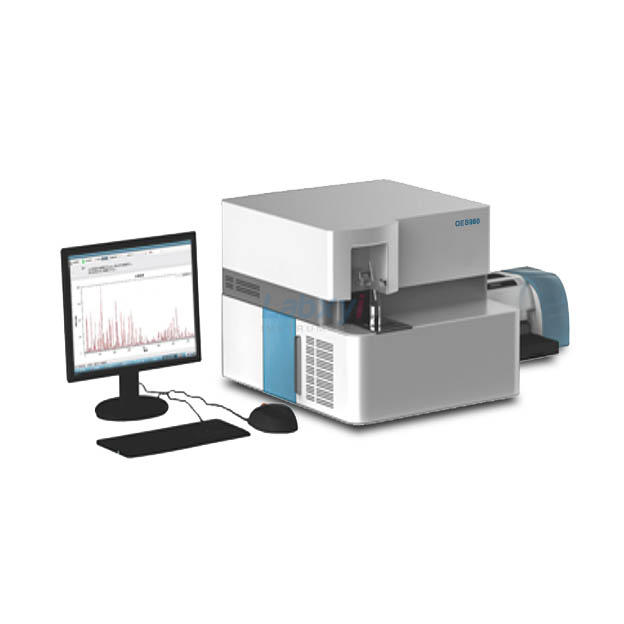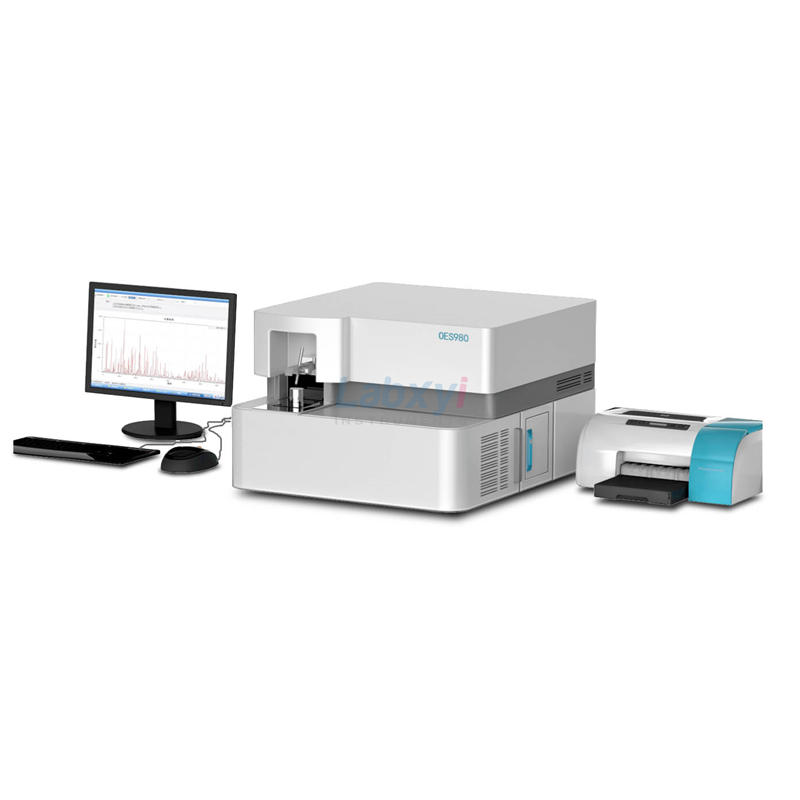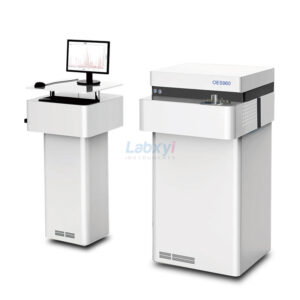Main technical features
| DESCRIPTION | |
-300x197.jpg) |
1. OES980 direct-reading spectrometer relies on its high performance and reliable design, as well as its innovative optical system and expanded wavelength range to ensure accurate identification and trace analysis of important elements. The instrument has extremely low detection limits and excellent long-term stability; The analysis results are accurate and reproducible. Labxyi uses leading CCD detectors and digital readout technology to make the overall instrument design superior to traditional photomultiplier tube technology. It has gradually become the first choice for the metal manufacturing, processing and foundry industries.
The detection wavelength range of the OES980 direct reading spectrometer reaches 130-800nm, and it is in the best position in the field of CCD spectrum from the lower detection limit to the upper detection limit. Through a lower wavelength analysis range, OES980 can further reduce the detection limit of C to 10ppm |
.jpg) -300x213.jpg) |
2. OES980 direct reading spectrometer adopts a new optical system design, which combines the latest CCD solid-state detector technology with optimized pixel resolution (12pm) and the latest grating spectroscopy technology, representing the latest direct reading spectroscopy technology in the digital era.
|
Main technical parameters
OES980 spectrometer can be used for elemental quantitative analysis and brand identification of solid metal samples. The optical system uses CCD/CMOS detector, and the spectral range covers all typical materials. The instrument is equipped with an argon flushing spark stage. The open design spark stage is suitable for analysis of samples of different shapes and sizes.
Optical system
- Paschen-Runge structure, Rowland circle optical system
- Rowland circle diameter: 400mm
- Effective wavelength range: 130 – 800 nm
- Detector: Multiple high-performance linear array CCD /CMOS
- Light chamber temperature: automatic control constant temperature: 34 ℃±5 ℃
- Pixel resolution: 10pm
- Grating marking: 3600 l/mm
- First-order spectral line dispersion: 1.2 nm/mm
- External entrance window for easy cleaning and replacement
- Excellent drift correction – thanks to automatic peak finding (0.1 pixel accuracy)
- Excellent UV sensitivity thanks to new and improved vacuum technology
Digital plasma generator
- Fully digital plasma spark light source technology
- Efficient thanks to compact design and semiconductor control technology
- High energy pre-ignition technology (HEPS)
- The excitation parameters can be customized and set by the user according to actual needs through the user interface.
- Frequency 100 – 1000 Hz
- Current 1-80A
- Adjusting parameters may require adjusting components
Optimized sample stage
- Open sample stage design meets large sample testing requirements
- 4mm sample stage analysis gap
- “Spray electrode” technology easily handles small samples and samples with complex geometric shapes
- Low argon consumption, when in standby : no standby flow required
- Universal adjustable sample adapter
- Different substrates can be easily replaced with corresponding spark tables.
- Optimized impurity removal system
- Sturdy copper sample stage provides excellent heat dissipation
Data output
- Data is stored in multiple data formats
- Can be connected to various standard printing devices
- Data can be sent remotely via the Internet
Software system
- Windows operating system
- English spectrometer operating software
- Optional data maintenance program
Size
- OES980 height: 465, length: 700, width: 800 mm , weight: 80 kg (excluding vacuum pump)
Power requirements
- AC220V / 50Hz _
- Maximum power 1500 W (host 810W, vacuum pump 610W, computer 110W)
- Average power 1200 W (host 510W, vacuum pump 610W, computer 110W )
- Standby power 70 W
- 16 A slow blow fuse
Argon requirements
- Pure argon , 99.999%; argon pressure reducing valve (specially equipped with pressure reducing valve);
- Air pressure 4-5bar,
- Copper tube transmission
Operation software analysis function
Powerful analysis capabilities
Rich data output formats
Data storage and printing functions
The instrument comes with diagnostic functions
Other functions

